Lindsey Stirling - Duality (2024)
rip by Boris1 Performer: Lindsey Stirling Album: Duality Label: Concord Records Catalog #: CRE02461 Style: Instrumental, Easy listening, Electronic Year: 2024 Format: Flac (*image + .cue,log,scans) Bitrate: lossless Covers: in archive Amount of tracks: 12 Size RAR: ~ 393 MB Upload: xfile.cloud Recovery: 3% Password: sim-sim Скрипачка Lindsey Stirling описывает свой последний альбом с метким названием Duality (Двойственность) как два альбома в одном. Идея этого названия заключается в том, что

Lindsey Stirling - Duality (2024)
rip by Boris1 Performer: Lindsey Stirling Album: Duality Label: Concord Records Catalog #: CRE02461 Style: Instrumental, Easy listening, Electronic Year: 2024 Format: Flac (*image + .cue,log,scans) Bitrate: lossless Covers: in archive Amount of tracks: 12 Size RAR: ~ 393 MB Upload: xfile.cloud Recovery: 3% Password: sim-sim Скрипачка Lindsey Stirling описывает свой последний альбом с метким названием Duality (Двойственность) как два альбома в одном. Идея этого названия заключается в том, что
01 07, 2024
Axel Rudi Pell - Risen Symbol (2024)
rip by Boris1 Performer: Axel Rudi Pell Album: Risen Symbol Label: Steamhammer/ SPV Catalog #: SPV 249152 CD Style: Heavy Metal, Melodic Metal Year: 2024 Format: Flac (*image + .cue,log,scans) Bitrate: lossless Covers: in archive Amount of tracks: 10 Size Rar: ~ 546 MB Upload: xfile.cloud Password: sim-sim Будучи одноименной группой немецкого гитариста Axel Rudi Pellа, которая еще в 80-х годах откололась от немецкой группы Steeler, Axel Rudi Pell с тех пор выпускает альбом за альбомом

Axel Rudi Pell - Risen Symbol (2024)
rip by Boris1 Performer: Axel Rudi Pell Album: Risen Symbol Label: Steamhammer/ SPV Catalog #: SPV 249152 CD Style: Heavy Metal, Melodic Metal Year: 2024 Format: Flac (*image + .cue,log,scans) Bitrate: lossless Covers: in archive Amount of tracks: 10 Size Rar: ~ 546 MB Upload: xfile.cloud Password: sim-sim Будучи одноименной группой немецкого гитариста Axel Rudi Pellа, которая еще в 80-х годах откололась от немецкой группы Steeler, Axel Rudi Pell с тех пор выпускает альбом за альбомом
01 07, 2024
PRETTY MAIDS «Discography» + solo (29 × CD • First Pressing • 1983-2023)
Performer: PRETTY MAIDS / プリティ・メイズ Album / collection: «Discography / ディスコグラフィー» + solo Series: First Pressing CD Series— Label: ⒸⓅ 1983-2023 Epic / CBS / Sony Music Japan Source: Rip by KoGGaN™ scans by inet… Official DR value: •13•12•12•14•12•11•11•9•11•11•8•12• •11•11•11•5•9•11•10•10•10•10•9•8•9•9•10•11•8• Catalog (Barcode): much… Genre / Style: Rock, Hard Rock, Heavy Metal, Melodic Metal Year (info): 1983-2023 (29 × First Press + Restored CD, Collection—) Format: WV (image + .cue) Bitrate:
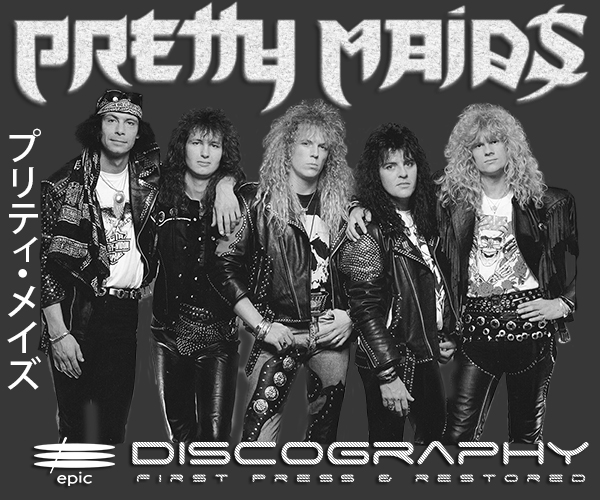
PRETTY MAIDS «Discography» + solo (29 × CD • First Pressing • 1983-2023)
Performer: PRETTY MAIDS / プリティ・メイズ Album / collection: «Discography / ディスコグラフィー» + solo Series: First Pressing CD Series— Label: ⒸⓅ 1983-2023 Epic / CBS / Sony Music Japan Source: Rip by KoGGaN™ scans by inet… Official DR value: •13•12•12•14•12•11•11•9•11•11•8•12• •11•11•11•5•9•11•10•10•10•10•9•8•9•9•10•11•8• Catalog (Barcode): much… Genre / Style: Rock, Hard Rock, Heavy Metal, Melodic Metal Year (info): 1983-2023 (29 × First Press + Restored CD, Collection—) Format: WV (image + .cue) Bitrate:
01 07, 2024
Жанры
Lossless Galaxy Release
Русская музыка
--Поп
--Рок
--Панк
--Альтернатива
--Металл
--Рэп, Хип-Хоп, R'n'B
--Джаз и Блюз
--Фолк
--Шансон, Авторская песня
--СССР
Зарубежная музыка
--Pop
--Rock
--Hard Rock
--Progressive & Art-Rock
--Pop-Rock & Soft Rock
--Instrumental Rock
--Heavy, Traditional, Industrial Metal
--Power, Gothic, Sympho Metal
--Thrash, Speed, Groove, Modern Metal
--Death, Melodic Death, Doom, Dark Metal
--Black, Pagan, Folk, Viking Metal
--Alternative
--Punk
--Disco, Eurodance
--Rap, Hip Hop, R'n'B
--Reggae, Ska, Dub
--Jazz, Blues, Soul
--Folk, Country, Ethnic
--Electronic, Ambient, New Wave
--House, Techno, Trance
Другие жанры
--New Age, Relax, Meditative & Flamenco
--Chillout, Lounge, Downtempo, Trip-Hop
--Drum & Bass, Jungle, Breakbeat, IDM
--Classical / Классическая музыка
--Soundtrack
--Музыкальные сказки
Vinyl Rip
HI-Res / DVD-Audio / DTS
--SACD
--DSD
--DVD-Audio
Сборники Lossless-Galaxy
Альбомы 2022
Альбомы 2023
Теги
1st Press 2022 2023 2024 70... AOR Black Metal blues Blues Rock Classic Rock Death Metal Discography Doom Metal Exclusive for Lossless-Galaxy Folk Rock Gothic Metal Hard Rock Heavy Metal Hi-Res Japanese Edition Jazz Jazz Rock Limited Edition lossless Melodic Death Metal Melodic Rock Modern Electric Blues Pop Pop Rock Power Metal Prog Rock Progressive Metal Progressive Rock Psych Rock Psychedelic Rock Rock SACD Symphonic Metal Thrash Metal Дискографии от KoGGaN
 Автор: ALLexxess, 15 мая 2011, Комментариев: 0, Просмотров: 6 950
Автор: ALLexxess, 15 мая 2011, Комментариев: 0, Просмотров: 6 950Bruce Springsteen: The Collection 1973 -1984 ● 8CD Box Set Sony Music 2010
Lossless Galaxy Release

Bruce Springsteen: The Collection 1973 -1984 ● 8CD Box Set Sony Music
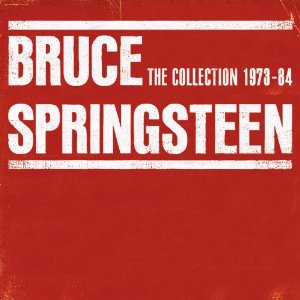
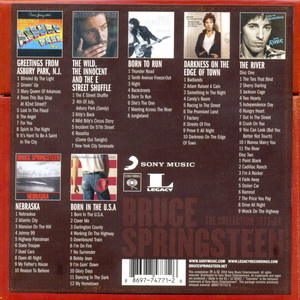
Исполнитель:
Bruce Springsteen
Box:
The Collection 1973 -1984
(8CD Box Set Sony Music)
Альбомы:
1973 Greetings From Asbury Park, N.J.
1973 The Wild, The Innocent & The E Street Shuffle
1975 Born To Run ● 1978 Darkness On The Edge Of Town
1980 The River 2CD Set ● 1982 Nebraska ● 1984 Born In The U.S.A.
Информация:
This compilation © 2010 Sony Music Entertaiment
Sony Music / Legacy Recordings / Columbia Records
Made in EU
Catalog Box: 88697747712 6
Catalog CDs:
1973 Greetings From Asbury Park, N.J. - 88697747712 CD1
1973 The Wild, The Innocent & The E Street Shuffle - 88697747712 CD2
1975 Born To Run - 88697747712 CD3 / 1978 Darkness On The Edge Of Town - 88697747712 CD4
1980 The River 88697747712 CD5~CD6 / 1982 Nebraska - 88697747712 CD7
1984 Born In The U.S.A. - 88697747712 CD8
Label Code: LC00162
Жанр: Rock / Pop Rock
Год: 2010
Формат: FLAC / Level 8 (img + *cue + log, AccurateRip)
Качество: lossless
Covers: format PNG 600dpi, full scans
Размер:
• • • • • • • • • • • • • • • • • • • • • • • • • • • • • • • •
Каждый CD можно скачать отдельно
Each CD can be downloaded separately
• • • • • • • • • • • • • • • • • • • • • • • • • • • • • • • •
Залито на: FileSonic + Hotfile + Fileserve (3% восстановление)
Bruce Springsteen
Box:
The Collection 1973 -1984
(8CD Box Set Sony Music)
Альбомы:
1973 Greetings From Asbury Park, N.J.
1973 The Wild, The Innocent & The E Street Shuffle
1975 Born To Run ● 1978 Darkness On The Edge Of Town
1980 The River 2CD Set ● 1982 Nebraska ● 1984 Born In The U.S.A.
Информация:
This compilation © 2010 Sony Music Entertaiment
Sony Music / Legacy Recordings / Columbia Records
Made in EU
Catalog Box: 88697747712 6
Catalog CDs:
1973 Greetings From Asbury Park, N.J. - 88697747712 CD1
1973 The Wild, The Innocent & The E Street Shuffle - 88697747712 CD2
1975 Born To Run - 88697747712 CD3 / 1978 Darkness On The Edge Of Town - 88697747712 CD4
1980 The River 88697747712 CD5~CD6 / 1982 Nebraska - 88697747712 CD7
1984 Born In The U.S.A. - 88697747712 CD8
Label Code: LC00162
Жанр: Rock / Pop Rock
Год: 2010
Формат: FLAC / Level 8 (img + *cue + log, AccurateRip)
Качество: lossless
Covers: format PNG 600dpi, full scans
Размер:
• • • • • • • • • • • • • • • • • • • • • • • • • • • • • • • •
Каждый CD можно скачать отдельно
Each CD can be downloaded separately
• • • • • • • • • • • • • • • • • • • • • • • • • • • • • • • •
Залито на: FileSonic + Hotfile + Fileserve (3% восстановление)
This eight CD box set contains Bruce Springsteen's first seven albums from the early '70s to the early '80s. Each disc is packaged in a mini LP card slipcase, all housed in a red box. Albums: Greetings From Asbury Park, The Wild The Innocent & E St. Shuffle, Born To Run, Darkness On The Edge Of Town, The River (2CD), Nebraska And Born In The USA.
allmusic.com / Review by Thom Jurek
This eight-disc box set includes the first seven albums by Bruce Springsteen & the E Street Band, from 1973's Greetings from Asbury Park, N.J. through 1984's Born in the U.S.A. (The River, having been a double album, is on two of the discs here). The individual CDs are packaged in LP mini sleeves. While The River, Greetings from Asbury Park, and Born to Run were originally released on LP with gatefold sleeves, only The River gets that treatment here. Also troubling is that there are no individual booklets, just one that comes inside the set that details credits and photographs of the front covers. It is unclear whether or not these are indeed remastered versions or simply the existing masters repackaged, and there is no bonus material. While Born to Run and Darkness on the Edge of Town have been given deluxe packaging with loads of extras, the rest of these titles were only released in Japan as remasters.

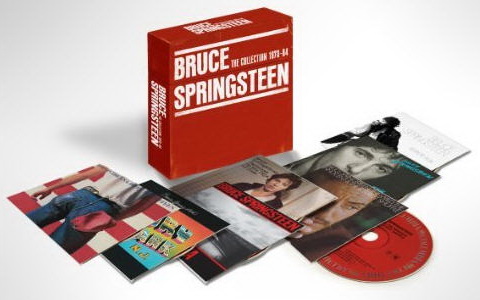
ru.wikipedia.org
Брюс Фредерик Спрингстин (Bruce Frederick Springsteen; 23 сентября 1949, Лонг Брэнч, Нью Джерси, США) - американский рок- и фолк-музыкант и автор песен. Воспитанный на музыке The Beatles, Элвиса Пресли, Вуди Гатри, Пита Сигера, Эдди Кохрейна и Боба Дилана, Спрингстин стал известен благодаря своим рок-песням с поэтичными текстами, основной темой которых является его родина, Нью Джерси. В январе 1973 года вышел дебютный альбом Спрингстина, «Greetings from Asbury Park, N.J.», за которым через полгода последовал диск «The Wild, the Innocent & the E-Street Shuffle». Они не привлекли значительного внимания и продавались неважно, хотя после триумфа последующих пластинок всё-таки стали платиновыми. Более того - песня «Blinded by the Light» с первого альбома Спрингстина в 1977 году дошла до первого места в Billboard Hot 100, правда, в исполнении команды Manfred Mann's Earth Band. В 1974 г. Спрингстин создал «E-Street Band» - музыкальный коллектив, который был призван сопровождать его во время туров по США. В августе 1975 г. третий альбом Спрингстина, «Born to Run», произвёл эффект разорвавшейся бомбы, превратив автора на некоторое время в самого востребованного персонажа в американской музыкальной индустрии. Его фотографии мелькали на обложках журналов «Time» и «Newsweek», концерты собирали полные стадионы поклонников, а критики хвалили его за то, что в век хард-рока и прогрессивного рока он нашёл в себе смелость возродить исконные ценности рок-н-ролла. На протяжении второй половины 1970-х критики неустанно пели Спрингстину дифирамбы, указывая, что у него необузданный драйв рок-н-ролла 1950-х уживается с вдумчивой лирикой в стиле Боба Дилана. Хотя многих ценителей музыки отталкивала поднятая вокруг рокера истерия, нельзя отрицать того, что к концу десятилетия в американской музыке появилась целая шеренга последователей Спрингстина, среди которых первое место оспаривали Боб Сигер и Джон Мелленкэмп. В 1978 году Спрингстин написал песню «Because the Night» для Патти Смит, ставшую её самым большим хитом. Несмотря на растущую с каждым годом конкуренцию, Спрингстин выпустил в октябре 1980 г. весьма достойный двойной альбом «The River», который содержал песню «Hungry Heart», ставшую одной из его визитный карточек. В сентябре 1982 г. последовал акустический диск «Nebraska» (1982), а на исходе года гитарист Стив ван Зандт объявил о том, что покидает группу Спрингстина. В июне 1984 г. очередной альбом Спрингстина, «Born in the U.S.A», стал феноменом не только рок-, но и популярной музыки. Семь хитов с него были выпущены синглами, и все они попали в лучшую десятку американского чарта продаж (это один из трех подобных случаев в истории). Сам альбом десять раз становился платиновым. На волне этого триумфа Спрингстин на протяжении двух лет гастролировал по США и Европе. Вышедшая в ноябре 1986 г. концертная запись «Live» также возглавила Billboard 200. По возвращении из тура Спрингстин развёлся с женой, заключил брак с бэк-вокалисткой E-Street Band, однако (в ноябре 1989 г.) распустил этот легендарный коллектив. Его последующие альбомы не вызвали большого интереса критиков и публики, однако написанная для фильма «Филадельфия» (1993) песня «Streets of Philadelphia» получила премию «Оскар». В течение 1990-х и 2000-х гг. Спрингстин собрал впечатляющую коллекцию премий «Грэмми», включая статуэтку за лучший мужской рок-вокал (2002 год, песня «The Rising»).
en.wikipedia.org
Bruce Frederick Joseph Springsteen (born September 23, 1949), nicknamed "The Boss," is an American singer-songwriter who records and tours with the E Street Band. Springsteen is widely known for his brand of Heartland rock, poetic lyrics, and Americana sentiments centered on his native New Jersey. Springsteen's recordings have included both commercially accessible rock albums and more sombre folk-oriented works. His most successful studio albums, Born to Run and Born in the U.S.A., showcase a talent for finding grandeur in the struggles of daily American life; he has sold more than 65 million albums in the United States and 120 million worldwide and he has earned numerous awards for his work, including 20 Grammy Awards, two Golden Globes and an Academy Award.
en.wikipedia.org
Greetings from Asbury Park, N.J. is the first studio album by Bruce Springsteen, released in 1973. It sold roughly 25,000 copies in the first year of its release. Springsteen and his first manager Mike Appel decided to record the album at the low-priced, out-of-the-way 914 Sound Studios to save as much as possible of the Columbia Records advance and cut the record in a single week. Both "Blinded by the Light" and "Spirit in the Night" were released as singles by Columbia, but neither made a dent in the US charts. Manfred Mann's Earth Band released a version of "Blinded by the Light" on their album The Roaring Silence. The song reached #1 on Billboard's Hot 100 on 19 February 1977 and #1 on the Canadian RPM chart the same day. The Manfred Mann's Earth Band recording of "Blinded by the Light" is Springsteen's only Number 1 single as a songwriter on the Hot 100. Richard Davis, upright bass player on "The Angel", also played the bass on Van Morrison's Astral Weeks. In 2003, the album was ranked number 379 on Rolling Stone magazine's list of the 500 greatest albums of all time. On November 22, 2009, Greetings from Asbury Park, NJ was played in its entirety for the first time by Bruce Springsteen and the E Street Band, at the HSBC Arena in Buffalo, New York, to celebrate the last show of the Working on a Dream tour. This marked the E Street Band's first-ever performance of "The Angel".
allmusic.com / Review by William Ruhlmann
Bruce Springsteen's debut album found him squarely in the tradition of Bob Dylan: folk-based tunes arranged for an electric band featuring piano and organ (plus, in Springsteen's case, 1950s-style rock & roll tenor saxophone breaks), topped by acoustic guitar and a husky voice singing lyrics full of elaborate, even exaggerated imagery. But where Dylan had taken a world-weary, cynical tone, Springsteen was exuberant. His street scenes could be haunted and tragic, as they were in "Lost in the Flood," but they were still imbued with romanticism and a youthful energy. Asbury Park painted a portrait of teenagers cocksure of themselves, yet bowled over by their discovery of the world. It was saved from pretentiousness (if not preciousness) by its sense of humor and by the careful eye for detail that kept even the most high-flown language rooted. Like the lyrics, the arrangements were busy, but the melodies were well developed and the rhythms, pushed by drummer Vincent Lopez, were breakneck.
201MB (2 Part) + 157MB (1 Part)
01 Blinded By The Light
02 Growin’ Up
03 Mary Queen Of Arkansas
04 Does This Bus Stop At 82nd Street?
05 Lost In The Flood
06 The Angel
07 For You
08 Spirit In The Night
09 It’s Hard To Be A Saint In The City
EAC log - AccurateRip
audiochecker / auCDtect
Spectrum / Matrix
01 Blinded By The Light
02 Growin’ Up
03 Mary Queen Of Arkansas
04 Does This Bus Stop At 82nd Street?
05 Lost In The Flood
06 The Angel
07 For You
08 Spirit In The Night
09 It’s Hard To Be A Saint In The City
EAC log - AccurateRip
audiochecker / auCDtect
Spectrum / Matrix
Внимание! У Вас нет прав для просмотра скрытого текста.
en.wikipedia.org
The Wild, the Innocent & the E Street Shuffle is the second album by Bruce Springsteen and the as-yet-unnamed E Street Band, and is described by Allmusic as "one of the greatest albums in the history of rock & roll." It was released in 1973. The album includes the song "Rosalita (Come Out Tonight)," the band's most-used set-closing song for the first 10 years of its career. As with Springsteen's first album, it was well-received critically but had little commercial success at the time. However, once Springsteen achieved popularity with Born to Run, several selections from this album became popular FM radio airplay and concert favorites. The E Street Band is known to have taken its name from David Sancious' mother's home in Belmar, New Jersey. But based on first-hand recounts of Sancious, the 'shuffle' occurred when the band's rented truck broke down late one night after a gig in New York City. Snowing, but within walking distance of Sancious' mother's home, the band decided to walk the short distance. The back photo on the album has the six band members standing in a doorway. The picture was of an antique store on Sairs Ave in the west end section of Long Branch, New Jersey. The building was across the street from West End Elementary School, and for years was Tommy Reeds bicycle repair shop and penny candy store; it has since been demolished and its former location is occupied by a parking lot. In 2003, the album was ranked number 132 on Rolling Stone magazine's list of the 500 greatest albums of all time. On November 7, 2009, Springsteen and the E Street Band played the album in its entirety for the first time ever in a concert at Madison Square Garden.
allmusic.com / Review by William Ruhlmann
Bruce Springsteen expanded the folk-rock approach of his debut album, Greetings from Asbury Park, N.J., to strains of jazz, among other styles, on its ambitious follow-up, released only eight months later. His chief musical lieutenant was keyboard player David Sancious, who lived on the E Street that gave the album and Springsteen's backup group its name. With his help, Springsteen created a street-life mosaic of suburban society that owed much in its outlook to Van Morrison's romanticization of Belfast in Astral Weeks. Though Springsteen expressed endless affection and much nostalgia, his message was clear: this was a goodbye-to-all-that from a man who was moving on. The Wild, the Innocent & the E Street Shuffle represented an astonishing advance even from the remarkable promise of Greetings; the unbanded three-song second side in particular was a flawless piece of music. Musically and lyrically, Springsteen had brought an unruly muse under control and used it to make a mature statement that synthesized popular musical styles into complicated, well-executed arrangements and absorbing suites; it evoked a world precisely even as that world seemed to disappear. Following the personnel changes in the E Street Band in 1974, there is a conventional wisdom that this album is marred by production lapses and performance problems, specifically the drumming of Vini Lopez. None of that is true. Lopez's busy Keith Moon style is appropriate to the arrangements in a way his replacement, Max Weinberg, never could have been. The production is fine. And the album's songs contain the best realization of Springsteen's poetic vision, which soon enough would be tarnished by disillusionment. He would later make different albums, but he never made a better one. The truth is, The Wild, the Innocent & the E Street Shuffle is one of the greatest albums in the history of rock & roll.
201MB (1 Part) + 129MB (1 Part)
01 The E Street Shuffle
02 4th Of July, Asbury Park (Sandy)
03 Kitty’s Back
04 Wild Billy’s Circus Story
05 Incident On 57th Street
06 Rosalita (Come Out Tonight)
07 New York City Serenade
EAC log - AccurateRip
audiochecker / auCDtect
Spectrum / Matrix
01 The E Street Shuffle
02 4th Of July, Asbury Park (Sandy)
03 Kitty’s Back
04 Wild Billy’s Circus Story
05 Incident On 57th Street
06 Rosalita (Come Out Tonight)
07 New York City Serenade
EAC log - AccurateRip
audiochecker / auCDtect
Spectrum / Matrix
Внимание! У Вас нет прав для просмотра скрытого текста.
en.wikipedia.org
Born to Run is the third album by the American rock singer-songwriter Bruce Springsteen. It was released on August 25, 1975 through Columbia Records. It captured the heaviness of Springsteen's earlier releases while displaying a more diverse range of influences. Born to Run was a critical and commercial success and became Springsteen's breakthrough album. It peaked at number three on the Billboard 200, eventually selling six million copies in the US by the year 2000. Two singles were released from the album: "Born to Run" and "Tenth Avenue Freeze-Out"; the first helped Springsteen to reach mainstream popularity. The tracks "Thunder Road" and "Jungleland" became staples of album-oriented rock radio and Springsteen concert high points. The album has been placed on several "best ever" lists and is listed in the Library of Congress' National Recording Registry of historic recordings. On November 14, 2005, a "30th Anniversary" remaster of the album was released as a box set including two DVDs: a production diary film and a concert movie. Being ranked number 18 on Rolling Stone's 500 Greatest Albums of All Time, it is widely considered his magnum opus. Springsteen began work on the album after touring in support of its previous album, The Wild, the Innocent and the E Street Shuffle, released in 1973. Given an enormous budget in a last-ditch effort at a commercially viable record, Springsteen became bogged down in the recording process while striving for a wall of sound production. But, fed by the release of an early mix of "Born to Run" to progressive rock radio, anticipation built toward the album's release. All in all the album took more than 14 months to record, with six months alone spent on the song "Born to Run" itself. During this time Springsteen battled with anger and frustration over the album, saying he heard "sounds in [his] head" that he could not explain to the others in the studio. During the process, Springsteen brought in Jon Landau to help with production. This was the beginning of the breakup of Springsteen's relationship with producer and manager Mike Appel, after which Landau assumed both roles. Once released, Born to Run was a breakthrough hit and catapulted his career from a northeast regional act to an acclaimed national and worldwide recording artist. This was his first album to feature pianist Roy Bittan and drummer Max Weinberg (although David Sancious and Ernest "Boom" Carter played the piano and drums, respectively, on the title track). Born to Run was released to overwhelming critical acclaim which swiftly spiralled into hype. While his previous two albums, Greetings from Asbury Park, N.J. and The Wild, the Innocent & the E Street Shuffle, received good reviews, popular success had been scarce; Born to Run cemented Springsteen's reputation among critics and established his first mainstream fanbase. The album is noted for its use of introductions to set the tone of each song (all of the record was composed on piano, not guitar), and for the Phil Spector-like "Wall of Sound" arrangements and production. Indeed, Springsteen has said that he wanted "Born to Run" to sound like "Roy Orbison singing Bob Dylan, produced by Spector." Most of the tracks were first recorded with a core rhythm section band comprising Springsteen, Weinberg, Bittan, and bassist Garry Tallent, with other members' contributions then added on. In terms of the original LP's sequencing, Springsteen eventually adopted a "four corners" approach, as the songs beginning each side ("Thunder Road", "Born to Run") were uplifting odes to escape, while the songs ending each side ("Backstreets", "Jungleland") were sad epics of loss, betrayal, and defeat. (Originally, he had planned to begin and end the album with alternative versions of "Thunder Road".) Also, original pressings have "Meeting Across the River" billed as "The Heist." The original album cover has the title printed in a graffiti style font. These copies are very rare and considered to be the "holy grail" for Springsteen collectors. The album's release was accompanied by a $250,000 promotional campaign by Columbia directed at both consumers and the music industry, making good use of Landau's "I saw rock 'n' roll's future - and its name is Bruce Springsteen" quote. With much publicity, Born to Run vaulted into the top 10 in its second week on the charts and soon went Gold. Time and Newsweek magazines put Springsteen on the cover in the same week (October 27, 1975) - in Time, Jay Cocks praised Springsteen, while the Newsweek article took a cynical look at the "next Dylan" hype that haunted Springsteen until his breakthrough. The question of hype became a story in itself as critics began wondering if Springsteen was for real or the product of record company promotion. Upset with Columbia's promotion department, Springsteen said the decision to label him as the "future of rock was a very big mistake and I would like to strangle the guy who thought that up." When Springsteen arrived for his first UK concert at the Hammersmith Odeon, he personally tore down the "Finally the world is ready for Bruce Springsteen" posters in the lobby and ordered that the buttons with "I have seen the future of rock 'n' roll at the Hammersmith Odeon" printed on them not be given out. Now fearing the hype might backfire, Columbia suspended all press interviews with Springsteen. When the hype died down, sales tapered off and the album was off the chart after 29 weeks. But the album had established a solid national fan base for Springsteen which he would build on with each subsequent release. The album debuted on the Billboard album chart on September 13, 1975 at #84. The following week it made an impressive increase entering the top 10 at #8, then spent two weeks at #4, and finally, during the weeks of October 11 and October 18, Born to Run reached its peak position of #3. Born to Run continued to be a strong catalog seller through the years, re-entering the Billboard chart in late 1980 after The River was released, and again after the blockbuster success of Born in the U.S.A., spending most of 1985 on the chart. It was certified triple-platinum by the Recording Industry Association of America in 1986, the first year in which pre-1976 releases were eligible for platinum and multi-platinum awards. In 1987, Born to Run was ranked #8 on Rolling Stone's "100 Best Albums of the Last Twenty Years" and in 2003, Rolling Stone's "500 Greatest Albums of All Time" ranked Born to Run at number 18. In 2001, the TV network VH1 named it the 27th-greatest album of all time, and in 2003, it was ranked as the most popular album in the first Zagat Survey Music Guide. Born to Run is listed in the Library of Congress' National Recording Registry of historic recordings. In December 2005, U.S. Representative Frank Pallone (who represents Asbury Park) and 21 co-sponsors sponsored H.Res. 628, "Congratulating Bruce Springsteen of New Jersey on the 30th anniversary of his masterpiece record album 'Born to Run', and commending him on a career that has touched the lives of millions of Americans." In general, resolutions honoring native sons are passed with a simple voice vote. This bill, however, was referred to the House Committee on Education and the Workforce and died there.
allmusic.com / Review by William Ruhlmann
Bruce Springsteen's make-or-break third album represented a sonic leap from his first two, which had been made for modest sums at a suburban studio; Born to Run was cut on a superstar budget, mostly at the Record Plant in New York. Springsteen's backup band had changed, with his two virtuoso players, keyboardist David Sancious and drummer Vini Lopez, replaced by the professional but less flashy Roy Bittan and Max Weinberg. The result was a full, highly produced sound that contained elements of Phil Spector's melodramatic work of the 1960s. Layers of guitar, layers of echo on the vocals, lots of keyboards, thunderous drums -- Born to Run had a big sound, and Springsteen wrote big songs to match it. The overall theme of the album was similar to that of The E Street Shuffle; Springsteen was describing, and saying farewell to, a romanticized teenage street life. But where he had been affectionate, even humorous before, he was becoming increasingly bitter. If Springsteen had celebrated his dead-end kids on his first album and viewed them nostalgically on his second, on his third he seemed to despise their failure, perhaps because he was beginning to fear he was trapped himself. Nevertheless, he now felt removed, composing an updated West Side Story with spectacular music that owed more to Bernstein than to Berry. To call Born to Run overblown is to miss the point; Springsteen's precise intention is to blow things up, both in the sense of expanding them to gargantuan size and of exploding them. If The Wild, the Innocent & the E Street Shuffle was an accidental miracle, Born to Run was an intentional masterpiece. It declared its own greatness with songs and a sound that lived up to Springsteen's promise, and though some thought it took itself too seriously, many found that exalting.
257MB
01 Thunder Road
02 Tenth Avenue Freeze-Out
03 Night
04 Backstreets
05 Born To Run
06 She’s The One
07 Meeting Across The River
08 Jungleland
EAC log - AccurateRip
audiochecker / auCDtect
Spectrum / Matrix
CDDA / Spectrum 02
01 Thunder Road
02 Tenth Avenue Freeze-Out
03 Night
04 Backstreets
05 Born To Run
06 She’s The One
07 Meeting Across The River
08 Jungleland
EAC log - AccurateRip
audiochecker / auCDtect
Spectrum / Matrix
CDDA / Spectrum 02
Внимание! У Вас нет прав для просмотра скрытого текста.
en.wikipedia.org
Darkness on the Edge of Town is the fourth album by Bruce Springsteen, released in the late spring of 1978. The album marked the end of a three year period of forced hiatus from recording brought on by contractual obligations and legal battling with former manager Mike Appel. Although the album did not produce high charting singles it nevertheless remained on the charts for 97 weeks. In September 2010 a documentary film chronicling the making of Darkness was first shown at the Toronto International Film Festival. Quoting Springsteen as saying “More than rich, more than famous, more than happy – I wanted to be great”, reviewer Stephen Whitty of the Newark Star-Ledger commented: "For many fans, that long journey pulled onto the Turnpike here." Recovering from legal troubles and the stress of the breakthrough success of Born to Run, Springsteen released a somewhat less commercial album, Darkness on the Edge of Town. In terms of the original LP's sequencing, Springsteen continued his "four corners" approach from Born to Run, as the songs beginning each side ("Badlands" and "The Promised Land") were martial rallying cries to overcome circumstances, while the songs ending each side ("Racing in the Street", "Darkness on the Edge of Town") were sad dirges of circumstances overcoming all hope. Unlike Born to Run, the songs were recorded by the full band all at once, frequently soon after Springsteen had written them. When Springsteen sings: "Summer's here and the time is right for racing in the street," on the track "Racing in the Street," he is taking-off Martha & the Vandellas' Dancing in the Street. Steven Van Zandt received a credit for production assistance for helping Springsteen tighten the arrangements from Born to Run's epic sound. This collection of songs, each of which Springsteen sang in the first person, was given unity by several recurring themes. The words “darkness” / “dark” appear in six of the tracks, while nine of them feature the “night” / “tonight”. “They” are mentioned in eight songs, with a general suggestion of nameless people who exert a negative influence. “Work” / “worked” / “working” form part of six songs, and so do the words “dream” / “dreams”. Six is also the number of songs in which Bruce and his characters are found “driving” / “racing” / “riding”, or mentioning the names of cars. There are references to “blood”, "born", "love" / "loved" in four of the tracks. The album failed to generate any hit singles, with "Prove It All Night" barely making the Top 40 in the U.S. and follow-up "Badlands" not even doing that well. At the time, Darkness claimed the number one slot on NME album of the year ranking. In 2003, the album was ranked number 151 on Rolling Stone magazine's list of the 500 greatest albums of all time.
allmusic.com / Review by William Ruhlmann
Coming three years and one extended court battle after Born to Run, Darkness on the Edge of Town was highly anticipated. Some attributed the album's embattled tone to Bruce Springsteen's legal troubles, but it carried on from Born to Run, in which Springsteen had first begun to view his colorful cast of characters as "losers." On Darkness, he began to see them as the working class: his characters, some of whom he inhabited and sang for in the first person, had little and were in danger of losing even that. Their only hope for redemption lay in working harder, and their only escape lay in driving. Springsteen presented these hard truths in hard rock settings, the tracks paced by powerful drumming and searing guitar solos. Though not as heavily produced as Born to Run, Darkness was given a full-bodied sound; Springsteen's stories were becoming less heroic, but his musical style remained grand -- the sound, and the conviction in his singing, added weight to songs like "Racing in the Street" and the title track, transforming the pathetic into the tragic. But despite the rock & roll fervor, Darkness was no easy listen, and it served notice that Springsteen was already willing to risk his popularity for his principles.
201MB (1 Part) + 123MB (1 Part)
01 Badlands
02 Adam Raised A Cain
03 Something In The Night
04 Candy’s Room
05 Racing In The Street
06 The Promised Land
07 Factory
08 Streets Of Fire
09 Prove It All Night
10 Darkness On The Edge Of Town
EAC log - AccurateRip
audiochecker / auCDtect
Spectrum / Matrix
CDDA
01 Badlands
02 Adam Raised A Cain
03 Something In The Night
04 Candy’s Room
05 Racing In The Street
06 The Promised Land
07 Factory
08 Streets Of Fire
09 Prove It All Night
10 Darkness On The Edge Of Town
EAC log - AccurateRip
audiochecker / auCDtect
Spectrum / Matrix
CDDA
Внимание! У Вас нет прав для просмотра скрытого текста.
en.wikipedia.org
The River is a double album by Bruce Springsteen released in 1980. The sources of The River go back into earlier parts of Springsteen's recording career. "Independence Day", "Point Blank", "The Ties That Bind", "Ramrod", and "Sherry Darling" were leftovers from his previous album, Darkness on the Edge of Town, and had been featured on that 1978 tour, as had parts of "Drive All Night" as a long interpolation within "Backstreets". "The River" had premiered at the September 1979 Musicians United for Safe Energy concerts, gaining a featured spot in the subsequent documentary No Nukes. “(The River) was a record that was sort of the gateway to a lot of my future writing. It was a record we made after Darkness on the Edge of Town. It was a record made during a recession - hard times in the States. Its title song is a song I wrote for my brother-in-law and sister. My brother-in-law was in the construction industry, lost his job and had to struggle very hard back in the late 70s, like so many people are doing today. It was a record where I first started to tackle men and women and families and marriage. There were certain songs on it that lead to complete records later on: "The River" sorta went to the writing on Nebraska, "Stolen Car" went to the writing on Tunnel of Love. Originally it was a single record. I handed it in with just one record and I took it back because I didn't feel it was big enough. Wanted to capture the themes I had been writing about on Darkness. I wanted to keep those characters with me and at the same time added music that made our live shows so much fun and joy for our audience. So, In the end, we're gonna take you down to The River tonight." Originally, the album was going to be a single set entitled The Ties That Bind and released in late 1979. According to Dave Marsh, tracks of this unreleased album were to be: Side One: 1. "The Ties That Bind" 2. "Cindy" 3. "Hungry Heart" 4. "Stolen Car" 5. "Be True". Side Two: 1. "The River" 2. "You Can Look (But Don't Touch)" 3. "The Price You Pay" 4. "I Wanna Marry You" 5. "Loose Ends". Springsteen added darker material after he'd written the title track. Indeed, The River became noted for its mix of the frivolous next to the solemn. This was intentional, and in contrast to Darkness, for as Springsteen said during an interview, "Rock and roll has always been this joy, this certain happiness that is in its way the most beautiful thing in life. But rock is also about hardness and coldness and being alone ... I finally got to the place where I realized life had paradoxes, a lot of them, and you've got to live with them." "Hungry Heart" was Springsteen's first U.S. pop singles chart top ten hit single, reaching #5. (Springsteen had not intended the song to be for himself, having initially written it for The Ramones; manager/producer Jon Landau convinced Springsteen to keep the song for himself.) The album hit number one on the U.S. pop albums chart, a first for Springsteen, and sold 1.6 million copies in the U.S. between its release and Christmas. Sales faltered with "Fade Away", which only reached #20. The album was followed by a lengthy tour of North America and Western Europe during 1980 and 1981. Several of the album's up-tempo rockers became concert staples for decades to come, including "Cadillac Ranch", "Ramrod", and "Out in the Street", as did "Two Hearts" (with Steven Van Zandt acting as the second 'heart'). "Stolen Car" and "Wreck on the Highway", the closing tracks on the original LP's sides three and four, bore quiet, haunted arrangements that presaged much of the musical direction Springsteen would take in the future. "Point Blank" took its title from a 1967 movie starring Lee Marvin. Since its release, The River has been certified quintuple platinum by the RIAA in the U.S., making it one of Springsteen's best-selling albums. In 2003, the album was ranked number 250 on Rolling Stone's list of the 500 greatest albums of all time. "Drive All Night" and "Stolen Car" played a key role in setting the tone of the 1997 film Cop Land. "Drive All Night" and "Out In The Street" were used in the 2007 film Reign Over Me, and the album was mentioned multiple times throughout the movie. On November 8, 2009, near the end of the Working on a Dream Tour, Springsteen and the E Street Band performed The River in its entirety for the first time at Madison Square Garden in New York City.
allmusic.com / Review by William Ruhlmann
Imbedded within the double-disc running time of The River is a single-disc album that follows up on the themes and sound of Darkness on the Edge of Town - wide-screen, midtempo rock and stories of the disillusionment of working-class life and the conflicts within families. In these songs, which include the title track, "Independence Day," and "Point Blank," Bruce Springsteen's world-view is just as dire as it had become on Darkness, but less judgmental. "Independence Day," for example, is a father-and-son ballad that has little of the anger of its hard rock counterpart on Darkness, "Adam Raised a Cain." Springsteen's heroes again seek to overcome their crushing troubles through defiance and by driving around, and though "The River" repeats the soured love theme of "Racing in the Street," he also posits romance as a possible escape, sometimes combining it with one of the other solutions, as on the eight-plus-minute "Drive All Night." But there is also another album lurking within The River, and it is a more lighthearted pop/rock collection of short, sometimes humorous songs like "Sherry Darling" and "I'm a Rocker." At times Springsteen combines elements of the two, as on "Out in the Street," perhaps the album's quintessential song, a catchy, uptempo number that sounds like something from the early '60s and echoes the theme of the Vogues' 1966 hit "Five O'Clock World." "Hungry Heart," which became Springsteen's first Top Ten hit, combines a rollicking musical track with a more sober lyrical theme that emphasizes longing over disappointment. But a better guide to Springsteen's development are the songs "Stolen Car" and the album-closing "Wreck on the Highway," gentle, moody ballads imbued with a sense of hopelessness that anticipate his next record, Nebraska.
202MB (2 Part) + 201MB (1 Part)
CD1
01 The Ties That Bind
02 Sherry Darling
03 Jackson Cage
04 Two Hearts
05 Independence Day
06 Hungry Heart
07 Out In The Street
08 Crush On You
09 You Can Look (But You Better Not Touch)
10 I Wanna Marry You
11 The River
EAC log - AccurateRip
audiochecker / auCDtect
Spectrum / Matrix
CDDA / Spectrum 02-05/09/11
CD2
01 Point Blank
02 Cadillac Ranch
03 I’m A Rocker
04 Fade Away
05 Stolen Car
06 Ramrod
07 The Price You Pay
08 Drive All Night
09 Wreck On The Highway
EAC log - AccurateRip
audiochecker / auCDtect
Spectrum / Matrix
CDDA / Spectrum 02-04/06-07
CD1
01 The Ties That Bind
02 Sherry Darling
03 Jackson Cage
04 Two Hearts
05 Independence Day
06 Hungry Heart
07 Out In The Street
08 Crush On You
09 You Can Look (But You Better Not Touch)
10 I Wanna Marry You
11 The River
EAC log - AccurateRip
audiochecker / auCDtect
Spectrum / Matrix
CDDA / Spectrum 02-05/09/11
CD2
01 Point Blank
02 Cadillac Ranch
03 I’m A Rocker
04 Fade Away
05 Stolen Car
06 Ramrod
07 The Price You Pay
08 Drive All Night
09 Wreck On The Highway
EAC log - AccurateRip
audiochecker / auCDtect
Spectrum / Matrix
CDDA / Spectrum 02-04/06-07
Внимание! У Вас нет прав для просмотра скрытого текста.
en.wikipedia.org
Nebraska is the sixth studio album by Bruce Springsteen, released in 1982. Sparsely-recorded on a cassette-tape Portastudio, the tracks on Nebraska were originally intended as demos of songs to be recorded with the E Street Band. However, Springsteen ultimately decided to release the demos themselves. Nebraska remains one of the most highly-regarded albums in his catalogue. The songs on Nebraska deal with ordinary, blue collar characters who face a challenge or a turning point in their lives. There is very little of the grace or salvation which can be seen in other albums. Initially, Springsteen recorded demos for the album at his home with 4-track cassette recorder. The demos were sparse, using only acoustic guitar, electric guitar (on "Open All Night"), harmonica, mandolin, glockenspiel, tambourine, organ and Springsteen's voice. Springsteen then recorded the album in a studio with the E Street Band. However, he and the producers and engineers working with him felt that a raw, haunted folk essence present on the home tapes was lacking in the band treatments, and so they ultimately decided to release the demo version as the final album. Complications with mastering of the tapes ensued because of low recording volume, but the problem was overcome with sophisticated noise reduction techniques. Springsteen fans have long speculated whether Springsteen's full-band recording of the album, nicknamed Electric Nebraska, will ever surface. In a 2006 interview, manager Jon Landau said it was unlikely and that "the right version of Nebraska came out". But in a 2010 interview with Rolling Stone, E Street Band drummer Max Weinberg praised the full band recording of the album as "killing." Somewhat different band arrangements of most of these songs were heard on the 1984-1985 Born in the U.S.A. Tour and have been played in various guises ever since. Other songs demoed during the Nebraska sessions include "Born in the U.S.A.," "Downbound Train," "Child Bride" (later retitled "Working on the Highway"), "Pink Cadillac" and more. Some have leaked on bootlegs. The album begins with "Nebraska", a first-person narrative based on the true story of 19-year-old spree killer Charles Starkweather and his 14-year-old girlfriend, Caril Ann Fugate, and ends with "Reason to Believe", a complex narrative that renders its title phrase into contemptuous sarcasm. The remaining songs are largely of the same bleak tone, including the dark "State Trooper," influenced by Suicide's "Frankie Teardrop". Criminal behavior continues as a theme in the song "Highway Patrolman": even though the protagonist works for the law, he lets his brother escape after he has shot someone (this became the basis for the Sean Penn-directed film The Indian Runner). "Open All Night", a Chuck Berry-style lone guitar rave-up, does manage a dose of defiant, humming-towards-the-gallows exuberance. Springsteen stated that the stories in this album were partly inspired by historian Howard Zinn's book A People's History of the United States. A music video was produced for the song "Atlantic City"; it features stark, black-and-white images of the city, which had not yet undergone its later economic transformation. "Atlantic City" was released as a single in the UK, but not the U.S. In 1989, Nebraska was ranked #43 on Rolling Stone magazine's list of the 100 greatest albums of the 1980s. In 2003, the album was ranked number 224 on Rolling Stone magazine's list of the 500 greatest albums of all time. Pitchfork Media listed it the 60th greatest album of the 1980s. In 2006, Q magazine placed the album at #13 in its list of "40 Best Albums of the '80s".
allmusic.com / Review by William Ruhlmann
There is an adage in the record business that a recording artist's demos of new songs often come off better than the more polished versions later worked up in a studio. But Bruce Springsteen was the first person to act on that theory, when he opted to release the demo versions of his latest songs, recorded with only acoustic or electric guitar, harmonica, and vocals, as his sixth album, Nebraska. It was really the content that dictated the approach, however. Nebraska's ten songs marked a departure for Springsteen, even as they took him farther down a road he had been traveling previously. Gradually, his songs had become darker and more pessimistic, and those on Nebraska marked a new low. They also found him branching out into better developed stories. The title track was a first-person account of the killing spree of mass murderer Charlie Starkweather. (It can't have been coincidental that the same story was told in director Terrence Malick's 1973 film Badlands, also used as a Springsteen song title.) That song set the tone for a series of portraits of small-time criminals, desperate people, and those who loved them. Just as the recordings were unpolished, the songs themselves didn't seem quite finished; sometimes the same line turned up in two songs. But that only served to unify the album. Within the difficult times, however, there was hope, especially as the album went on. "Open All Night" was a Chuck Berry-style rocker, and the album closed with "Reason to Believe," a song whose hard-luck verses were belied by the chorus - even if the singer couldn't understand what it was, "people find some reason to believe." Still, Nebraska was one of the most challenging albums ever released by a major star on a major record label.
262MB
01 Nebraska
02 Atlantic City
03 Mansion On The Hill
04 Johnny 99
05 Highway Patrolman
06 State Trooper
07 Used Cars
08 Open All Night
09 My Father’s House
10 Reason To Believe
EAC log - AccurateRip
audiochecker / auCDtect
Spectrum / Matrix
01 Nebraska
02 Atlantic City
03 Mansion On The Hill
04 Johnny 99
05 Highway Patrolman
06 State Trooper
07 Used Cars
08 Open All Night
09 My Father’s House
10 Reason To Believe
EAC log - AccurateRip
audiochecker / auCDtect
Spectrum / Matrix
Внимание! У Вас нет прав для просмотра скрытого текста.
en.wikipedia.org
Born in the U.S.A. is the seventh studio album by American rock singer-songwriter Bruce Springsteen, released on June 4, 1984. A popular and commercial triumph, it found Springsteen marking a departure in his sound. While the predecessor, the dark and acoustic Nebraska featured songs of pessimism and isolation, Born in the U.S.A.'s lyrics expressed signs of hope in the daily fight of the standard American in following the American Dream, a new feeling complemented by synthesized arrangements and a pop-flavored, radio-oriented sound that helped Springsteen to extend his popularity and appeal to mainstream audiences. The album was supported by an enormous commercial campaign that helped create several hit singles, as well as remixes and music videos. Born in the U.S.A. was the best-selling album of 1985 in the United States (and also Springsteen's most successful album ever). The album produced a record-tying string of seven Top 10 singles (the most for an album in history tied with Michael Jackson's Thriller and Janet Jackson's Rhythm Nation 1814) and also a worldwide concert tour (the two-year Born in the U.S.A. Tour) that was a success. Apart from this hype, the album was lauded by most critics and is often considered Springsteen's magnum opus along with his 1975 breakthrough, Born to Run. The title track is often misinterpreted as a patriotic anthem. Its cover (a close-up of Springsteen's rear in front of an American flag, as he was photographed by Annie Leibovitz) became quite recognizable in its day. In 1981, Springsteen was asked to write music for a film by Paul Schrader called Born in the U.S.A. (Schrader's movie would eventually be released 1987, entitled Light of Day, featuring Michael J. Fox and Joan Jett). Shortly after, when Springsteen was working on a song titled "Vietnam," he glanced at the script and sang the title. The song, entitled as the work-in-progress movie, was already finished during the sessions of Springsteen's introspective album Nebraska, and Springsteen originally wanted to include it on the album. However, it was removed as it did not coincide with the dark feel of the rest of the songs. The same happened with other songs already cut around January or February 1982 – the energetic rocker "Cover Me" and the intimate "I'm on Fire". Between April and May, Springsteen composed and recorded a number of songs specifically intended for an album besides Nebraska at The Power Station in New York – "Born in the U.S.A.", "Darlington County", "Working on the Highway", "Downbound Train", "I'm Goin' Down" and "Glory Days". By mid-1982, most of the album was already recorded even over three months before the commercial release of Nebraska. In May 1983, Springsteen cut another song, "My Hometown" at The Hit Factory and around the end of the year he taped the two final tracks originally considered for the album – "No Surrender" and "Bobby Jean". A last moment addition was "Dancing in the Dark", a song specifically commissioned by Springsteen's producer and manager Jon Landau, who was satisfied with the material recorded but wanted a blockbuster first single, one that was fresh and directly relevant to Springsteen's current state of mind. Landau and Springsteen got into an argument, but later on Springsteen wrote "Dancing in the Dark" with some trepidation. His irked mood from the day's argument combined with the frustrations at trying to complete the album quickly poured out into the lyrics. As he wrote on his 1998 book Songs, "It went as far in the direction of pop music as I wanted to go - and probably a little farther." However, Springsteen noted that "My heroes, from Hank Williams to Frank Sinatra to Bob Dylan, were popular musicians. They had hits. There was value in trying to connect with a large audience." One of the songs that was about to be left off the album was "No Surrender". Springsteen claimed that this was because "you don’t hold out and triumph all the time in life. (...) You compromise, you suffer defeat; you slip into life’s gray areas." Steven Van Zandt, convinced Springsteen otherwise: "He argued that the portrait of friendship and the song’s expression of the inspirational power of rock music was an important part of the picture." The album was recorded on analog master tapes, and initially issued on both LP and cassette. However, Born in the U.S.A. became the first compact disc manufactured in the United States for commercial release, when CBS Records opened its CD manufacturing plant in Terre Haute, Indiana in September 1984. Discs previously had been imported from Japan. Born in the U.S.A. was received by music critics with almost universal acclaim and praise. However, some argued its evident commercial edge and synthesized production, especially when compared to the obscure, introspective predecessor, the critical favorite Nebraska. That was not a problem for such a respected author as Robert Christgau, who, at the time of release, gave an A+ to the album, recognizing it as his "most rhythmically propulsive, vocally incisive, lyrically balanced, and commercially undeniable album." He added that "the aural vibrancy of the thing reminds me like nothing in years that what teenagers loved about rock and roll wasn't that it was catchy or even vibrant but that it just plain sounded good." He finally stated that, "while Nebraska's one-note vision may be more left-correct, my instincts (not to mention my leftism) tell me that this uptempo worldview is truer." Rolling Stone also praised the album, giving it five out of five stars, highlighting the prevalence of uptempo songs, and calling it an album of "rowdy, indomitable spirit" AllMusic also gave five stars to the album, with William Ruhlmann considering that it was the apotheosis of the E Street Band and a culmination of a road traced since their very beginning - "the place where they renewed their commitment and where Springsteen remembered that he was a rock & roll star, which is how a vastly increased public was happy to treat him." In June 2009, during its 25th anniversary, the album confirmed its enduring popularity as many critics and journalists revisited the album with particularly enthusiasm as its theme coincided with the "new hope" bought in the wake of the Barack Obama era. Born in the U.S.A. was voted as the best album of the year in The Village Voice's Pazz & Jop critics poll. In 2003, the album was ranked number 85 on Rolling Stone magazine's list of the 500 greatest albums of all time. In 1989, it was rated #6 on Rolling Stone magazine's list of The 100 Greatest Albums of the 1980s. Chris Smith also included the album in his book 101 Albums that Changed Popular Music, stating that it was, lyrically, "as desperate as Nebraska, but the energy of the E Street Band brought the songs such power that many mistook the album–and the title track in particular - as a celebration of patriotism devoid of any critical commentary." Despite the blockbuster success and critical acclaim of the album, Springsteen often expressed some mixed feelings about it. He often considered that Nebraska contains some of his strongest writing, while Born in the U.S.A. did not necessarily follow suit. The title track, "more or less stood by itself,” he declared. "The rest of the album contains a group of songs about which I’ve always had some ambivalence." Even so, and despite calling it the "grab-bag nature" of the album, he acknowledged its powerful effect on his career, claiming: "Born in the U.S.A. changed my life and gave me my largest audience. It forced me to question the way I presented my music and made me think harder about what I was doing." The album received many awards, including four American Music Awards. At the Grammy Awards, it received a total of four nominations (including Album of the Year, losing against Lionel Richie's Can't Slow Down).
allmusic.com / Review by William Ruhlmann
Bruce Springsteen had become increasingly downcast as a songwriter during his recording career, and his pessimism bottomed out with Nebraska. But Born in the U.S.A., his popular triumph, which threw off seven Top Ten hits and became one of the best-selling albums of all time, trafficked in much the same struggle, albeit set to galloping rhythms and set off by chiming guitars. That the witless wonders of the Reagan regime attempted to co-opt the title track as an election-year campaign song wasn't so surprising: the verses described the disenfranchisement of a lower-class Vietnam vet, and the chorus was intended to be angry, but it came off as anthemic. Then, too, Springsteen had softened his message with nostalgia and sentimentality, and those are always crowd-pleasers. "Glory Days" may have employed Springsteen's trademark disaffection, yet it came across as a couch potato's drunken lament. But more than anything else, Born in the U.S.A. marked the first time that Springsteen's characters really seemed to relish the fight and to have something to fight for. They were not defeated ("No Surrender"), and they had friendship ("Bobby Jean") and family ("My Hometown") to defend. The restless hero of "Dancing in the Dark" even pledged himself in the face of futility, and for Springsteen, that was a step. The "romantic young boys" of his first two albums, chastened by "the working life" encountered on his third, fourth, and fifth albums and having faced the despair of his sixth, were still alive on this, his seventh, with their sense of humor and their determination intact. Born in the U.S.A. was their apotheosis, the place where they renewed their commitment and where Springsteen remembered that he was a rock & roll star, which is how a vastly increased public was happy to treat him.
201MB (1 Part) + 153MB (1 Part)
01 Born In The U.S.A.
02 Cover Me
03 Darlington County
04 Working On The Highway
05 Downbound Train
06 I’m On Fire
07 No Surrender
08 Bobby Jean
09 I'm Goin' Down
10 Glory Days
11 Dancing In The Dark
12 My Hometown
EAC log - AccurateRip
audiochecker / auCDtect
Spectrum / Matrix
CDDA / Spectrum 02-03
01 Born In The U.S.A.
02 Cover Me
03 Darlington County
04 Working On The Highway
05 Downbound Train
06 I’m On Fire
07 No Surrender
08 Bobby Jean
09 I'm Goin' Down
10 Glory Days
11 Dancing In The Dark
12 My Hometown
EAC log - AccurateRip
audiochecker / auCDtect
Spectrum / Matrix
CDDA / Spectrum 02-03
Внимание! У Вас нет прав для просмотра скрытого текста.
Похожие новости:
Комментарии отсутствуют
Добавить комментарий!
Информация
Посетители, находящиеся в группе Гости, не могут оставлять комментарии к данной публикации.
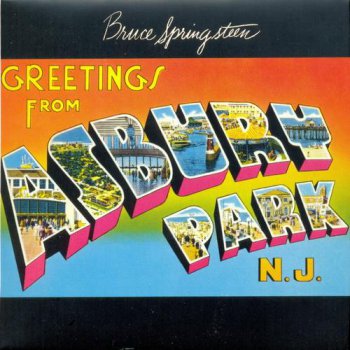

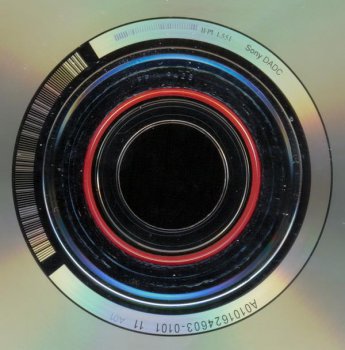
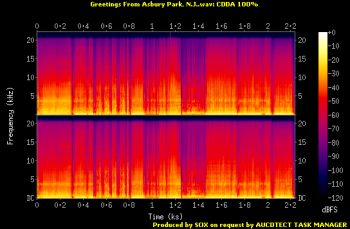
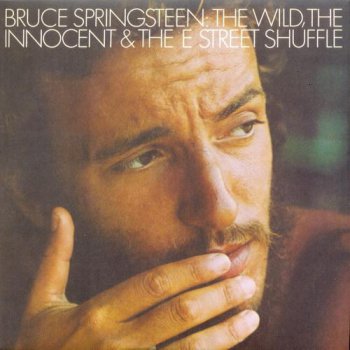
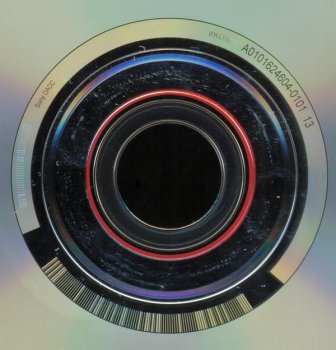
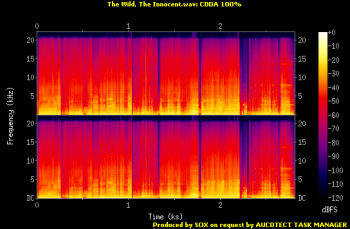
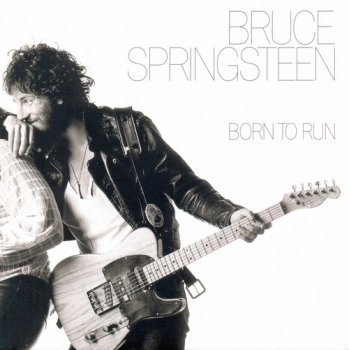
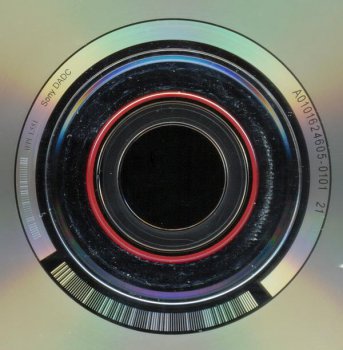
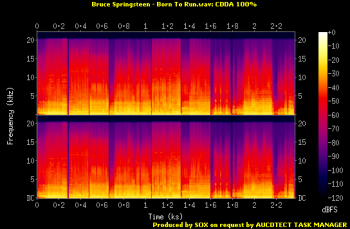
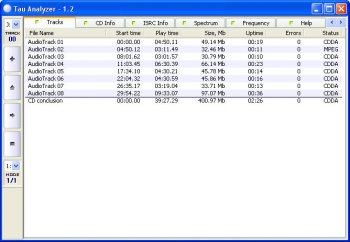

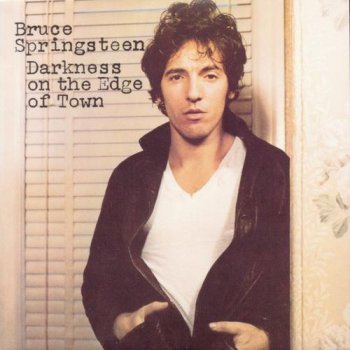
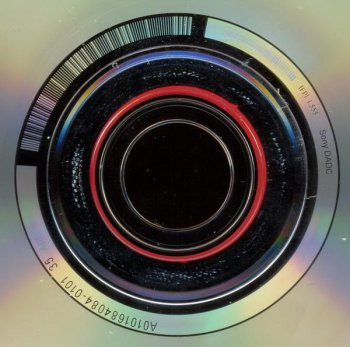
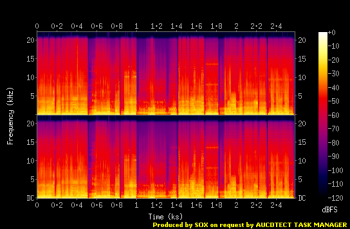
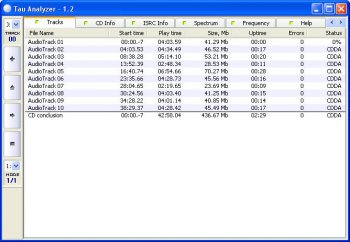
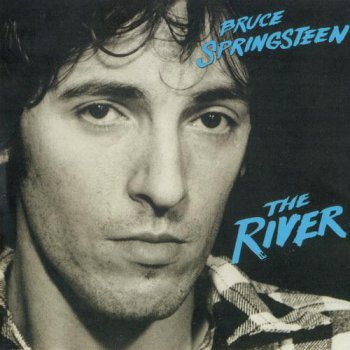
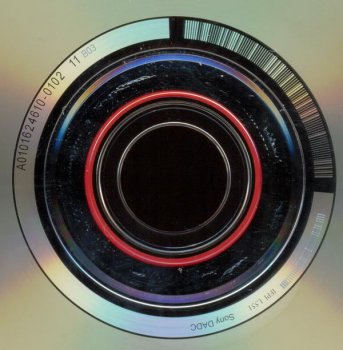
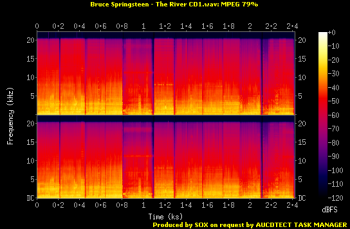

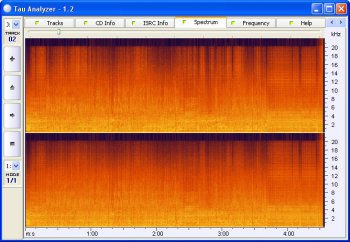
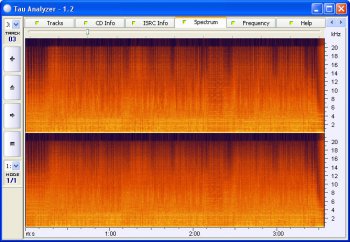
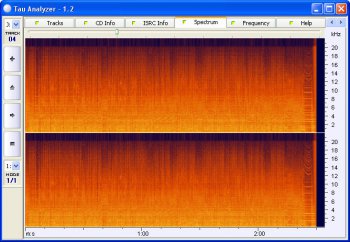
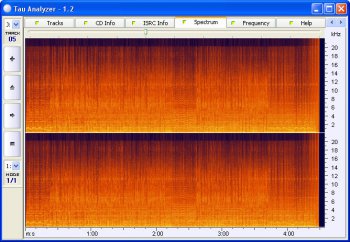
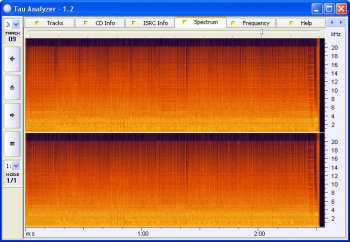
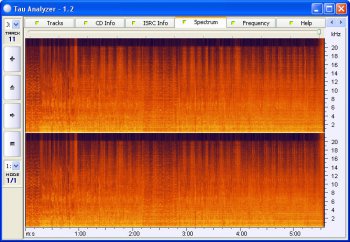

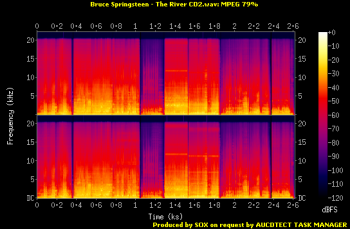
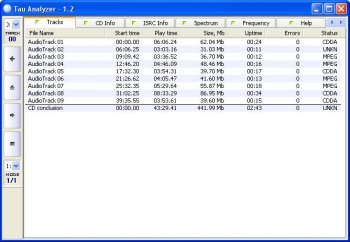
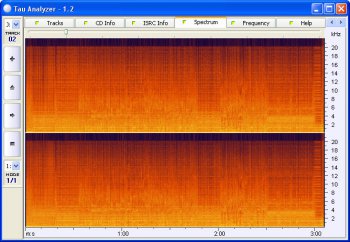
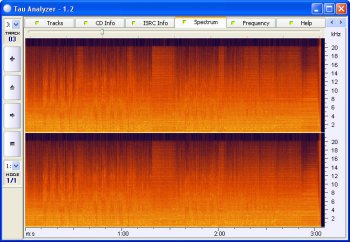
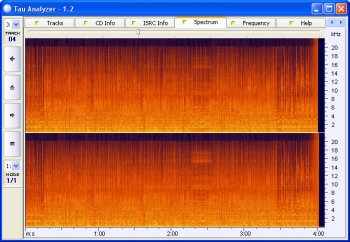
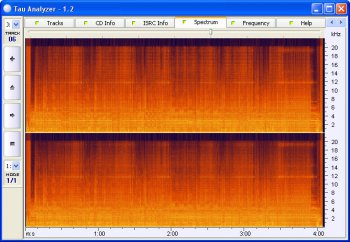
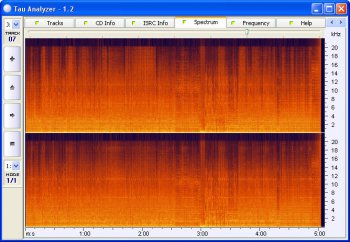
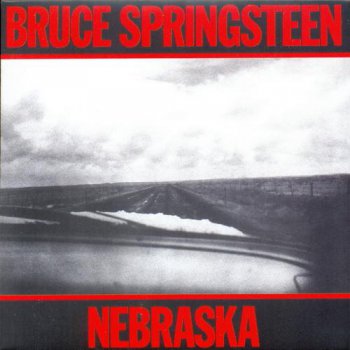
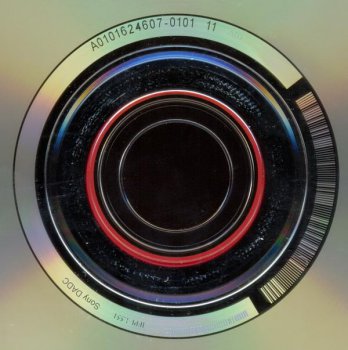
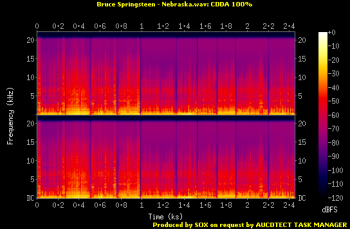
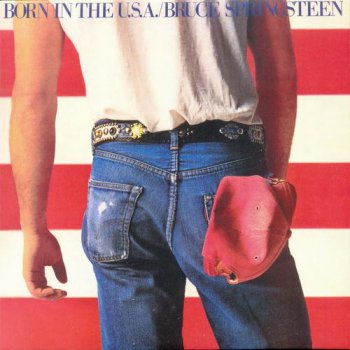
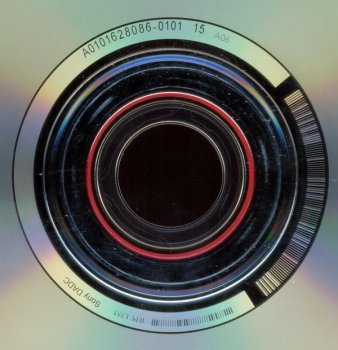
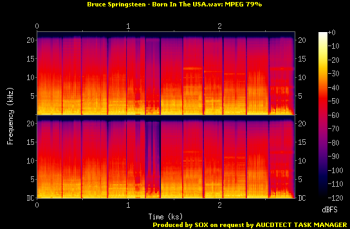

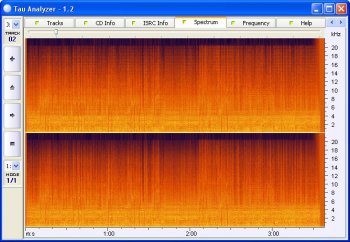
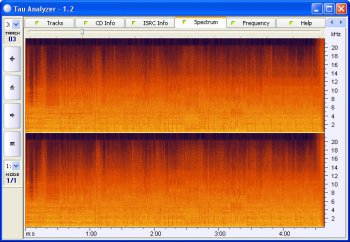
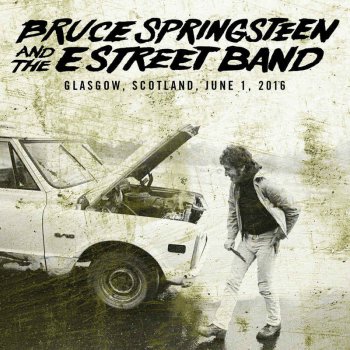

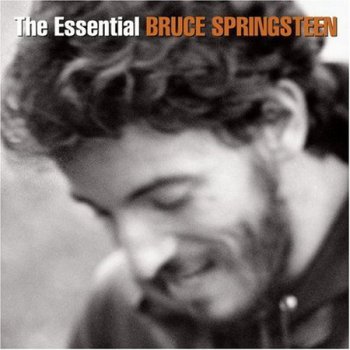
![Bruce Springsteen - Born In The U.S.A. [Japanese Edition] (1984)](/uploads/posts/2011-11/1321853745_bruce-springsteen-born-in-the-u.s.a..jpg)